Introduction to Detergent Grade HPMC Hydroxypropyl Methylcellulose
In the intricate landscape of modern chemical manufacturing, the role of high-performance additives cannot be overstated. Among these, Detergent Grade HPMC Hydroxypropyl Methylcellulose stands out as a critical component, revolutionizing the formulation of various detergent products. HPMC, a versatile cellulose ether, is widely recognized for its exceptional thickening, stabilizing, film-forming, and water retention properties. Specifically tailored for the detergent industry, its unique molecular structure provides optimal performance characteristics crucial for enhancing product efficacy, aesthetics, and user experience.
The demand for sophisticated detergent formulations that offer superior cleaning, long-lasting stability, and environmental compatibility has driven the evolution of additive technology. Detergent Grade HPMC Hydroxypropyl Methylcellulose addresses these demands by contributing to improved rheology, anti-redeposition capabilities, foam stabilization, and excellent dispersion in both liquid and powder systems. This article delves into the technical intricacies, application advantages, and market trends surrounding this essential polymer, offering a comprehensive overview for B2B decision-makers and technical specialists.
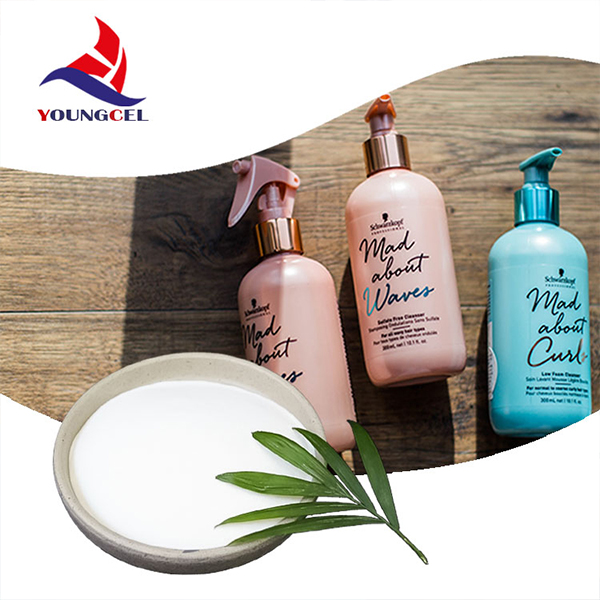
Industry Trends and Market Dynamics
The global detergent industry is undergoing significant transformation, influenced by factors such as increasing environmental consciousness, demand for concentrated products, and a shift towards sustainable formulations. Consumers and industrial clients alike are prioritizing detergents that are effective, biodegradable, and free from harsh chemicals. This trend directly impacts the choice of raw materials, elevating the importance of functional polymers like Detergent Grade HPMC Hydroxypropyl Methylcellulose.
- Sustainability Focus: Growing demand for bio-based and environmentally friendly ingredients. HPMC, derived from cellulose, aligns well with this trend due to its natural origin and biodegradability.
- Concentrated Formulations: The drive for reduced packaging, lower shipping costs, and improved efficiency has led to the development of highly concentrated detergents. HPMC's rheological control properties are crucial in maintaining the stability and pourability of these formulations.
- Performance Enhancement: Consumers expect superior cleaning performance, stain removal, and fabric care. HPMC contributes to these aspects by improving surfactant efficacy, suspending soil, and preventing redeposition.
- Specialty Detergents: Expansion into specialized segments such as laundry pods, dishwashing tablets, and industrial cleaners further broadens the application scope for tailor-made HPMC grades.
The market for cellulose ethers in detergents is projected to grow steadily, driven by these evolving requirements. Manufacturers are continuously innovating to produce HPMC variants with optimized solubility, viscosity profiles, and compatibility with various surfactant systems, thus solidifying its position as a key enabling ingredient.
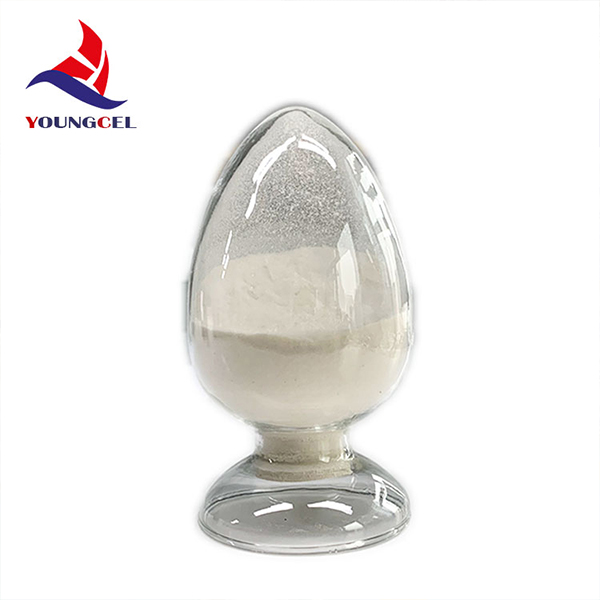
Manufacturing Process of Detergent Grade HPMC
The production of Detergent Grade HPMC Hydroxypropyl Methylcellulose is a sophisticated chemical process involving several controlled steps to achieve the desired purity, degree of substitution, and molecular weight. Understanding this process is crucial for appreciating the product's quality and performance consistency.
Schematic Process Flow:
-
Raw Material Preparation:
High-purity refined cotton linter or wood pulp (cellulose) is meticulously selected. This cellulose serves as the backbone polymer. The material undergoes pre-treatment to ensure optimal reactivity.
-
Alkalization:
The cellulose is steeped in a concentrated alkaline solution, typically sodium hydroxide (NaOH), to activate the hydroxyl groups. This forms alkali cellulose, increasing its reactivity for subsequent etherification.
-
Etherification:
The alkali cellulose reacts with methyl chloride (CH3Cl) and propylene oxide (CH3CH(O)CH2) in a carefully controlled reactor. The methyl groups and hydroxypropyl groups substitute the hydroxyl groups on the cellulose backbone, forming the HPMC polymer. The ratio of these reactants and reaction conditions determine the degree of substitution and molar substitution, which are critical for the final product's properties, especially solubility and gelling temperature.
-
Neutralization and Purification:
After etherification, the reaction mixture is neutralized, usually with an acid. The crude HPMC is then purified through hot water washing to remove salts, unreacted reagents, and other by-products, ensuring high purity. This step is critical for detergent grade applications to prevent interference with other formulation components.
-
Drying, Grinding, and Sieving:
The purified HPMC is dried to a specified moisture content, then finely ground into a powder. Subsequent sieving classifies the product into various particle size distributions, optimizing it for different detergent forms (e.g., fine powder for tablets, coarser for liquid thickeners). This ensures consistent dissolution rates and performance.
-
Quality Control and Packaging:
Each batch undergoes rigorous quality control testing against international standards such as ISO and internal specifications (e.g., viscosity, moisture content, pH, purity, heavy metals). Products are then packaged in moisture-proof bags for optimal shelf life and transport.
The typical service life of properly stored Detergent Grade HPMC Hydroxypropyl Methylcellulose is generally 1-2 years, maintaining its specifications under cool, dry conditions. Target industries for this product extend beyond general consumer detergents to include industrial & institutional (I&I) cleaners, textile detergents, dishwashing liquids, and specialty personal care cleansing products.
Advantages in typical application scenarios include enhanced viscosity stability in liquid detergents, improved anti-redeposition properties for laundry, and excellent film-forming capabilities in tablet formulations for efficient dissolution. The precise control over the manufacturing process ensures consistent product quality, which is paramount for sensitive detergent formulations.
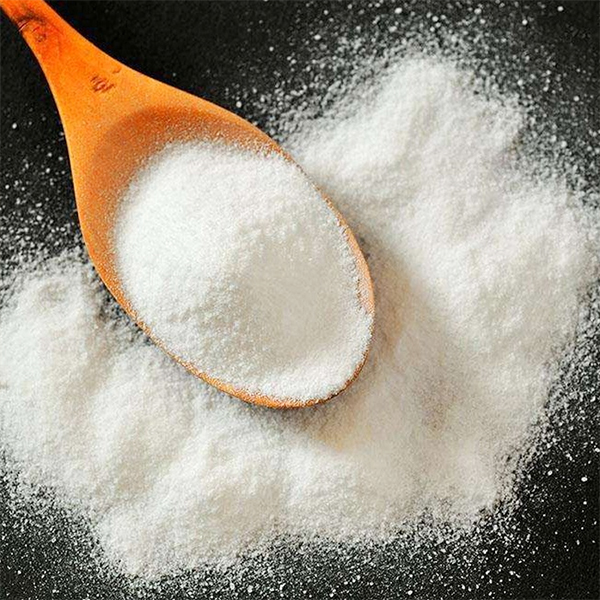
Technical Specifications and Parameters
The efficacy of Detergent Grade HPMC Hydroxypropyl Methylcellulose in various applications is defined by its precise technical specifications. Key parameters include viscosity, degree of substitution (DS), molar substitution (MS), particle size, pH, and moisture content. These properties are meticulously controlled during manufacturing to ensure optimal performance in diverse detergent formulations.
Typical Product Specification Table for Detergent Grade HPMC:
| Parameter | Unit | Specification Range | Test Method |
|---|---|---|---|
| Viscosity (2% Solution, 20°C) | mPa.s | 50 - 200,000 (Customizable) | Brookfield RVT |
| Methoxy Content (DS) | % | 19.0 - 30.0 | USP/EP Method |
| Hydroxypropoxy Content (MS) | % | 3.0 - 12.0 | USP/EP Method |
| Moisture Content | % | ≤ 5.0 | ISO 1618-2 |
| Ash Content | % | ≤ 2.0 (untreated) / ≤ 0.5 (treated) | ISO 1618-1 |
| pH (1% Solution) | - | 5.0 - 8.0 | Potentiometric |
| Particle Size (through 80 mesh) | % | ≥ 98.0 | Standard Sieve |
Note: Specifications may vary slightly based on specific grade and application requirements. Customized solutions are available.
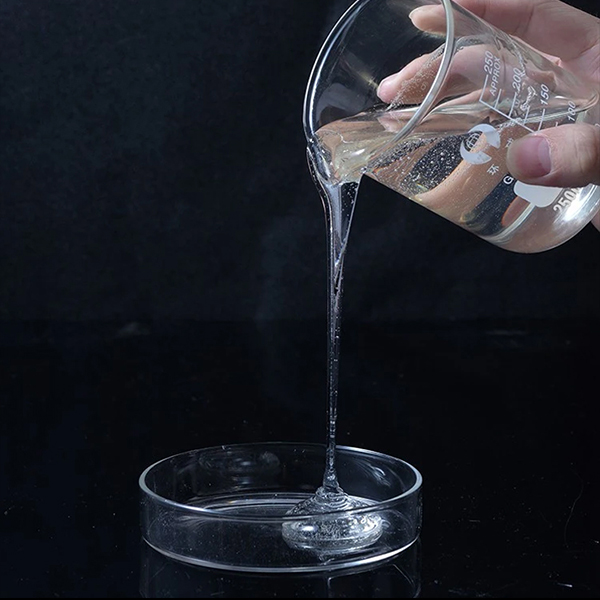
Application Scenarios and Technical Advantages
The diverse properties of Detergent Grade HPMC Hydroxypropyl Methylcellulose make it an indispensable additive across a wide spectrum of detergent applications, offering both functional and economic advantages.
Key Application Areas:
- Liquid Laundry Detergents: Acts as an excellent thickener and rheology modifier, providing desired viscosity for pourability and stability. It prevents phase separation of multi-component formulations and enhances the suspension of pigments and insoluble solids. HPMC also contributes to anti-redeposition, ensuring soil is suspended in the wash water and doesn't re-deposit onto fabrics.
- Dishwashing Liquids: Improves foam stability and creates a rich, long-lasting lather, which is perceived as a sign of efficacy by consumers. Its thickening capability enhances the "feel" and dispensing of the product.
- Detergent Powders & Tablets: In powder formulations, HPMC acts as a binder and disintegrant, improving granule integrity and aiding quick dissolution upon contact with water. For detergent tablets and pods, it functions as a film-former, providing structural integrity and controlled release of active ingredients. This helps in achieving precise dosing and enhanced cleaning performance.
- Industrial & Institutional (I&I) Cleaners: Used in heavy-duty cleaners, floor cleaners, and degreasers where stable viscosity and enhanced soil suspension are critical for efficient cleaning in large-scale applications. Its high salt tolerance is particularly beneficial in these demanding environments.
- Personal Care Cleansing Products: While primarily detergent grade, certain HPMC types cross over into body washes, shampoos, and hand soaps, providing thickening, foam enhancement, and sensory benefits.
Technical Advantages:
- Superior Thickening Efficiency: Provides stable viscosity over a wide pH range and temperature, ensuring product consistency and desired rheology. This is critical for achieving optimal dispensing and user experience.
- Excellent Foam Stabilization: Enhances the stability and volume of foam, which is a key performance indicator for many cleansing products.
- Anti-Redeposition Properties: Forms a protective film on fabric surfaces or suspended soil particles, preventing dirt from re-depositing during the wash cycle, leading to cleaner results.
- Improved Emulsification & Dispersion: Aids in dispersing insoluble components and stabilizing emulsions, leading to homogeneous and stable detergent formulations.
- Film-Forming & Binding Capabilities: Crucial for the structural integrity of detergent tablets and pods, ensuring controlled dissolution and efficient delivery of active ingredients.
- Temperature and Salt Tolerance: Maintains performance characteristics even in challenging conditions, including varying water hardness and temperature ranges.
- Biodegradability & Eco-friendliness: Derived from natural cellulose, HPMC is a more sustainable choice, aligning with contemporary environmental regulations and consumer preferences.
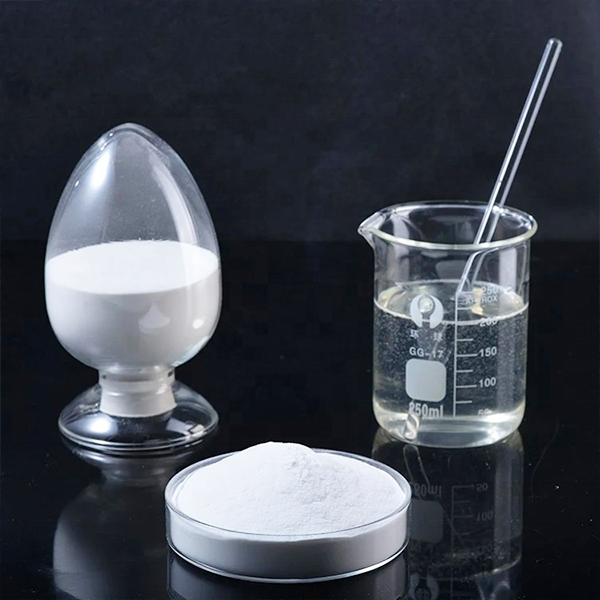
Vendor Comparison and Customized Solutions
Selecting the right supplier for Detergent Grade HPMC Hydroxypropyl Methylcellulose is a critical decision for manufacturers, impacting product quality, cost-effectiveness, and supply chain reliability. While many vendors offer HPMC, distinguishing factors lie in their technical expertise, quality control, customization capabilities, and after-sales support.
Key Considerations for Vendor Selection:
- Quality & Consistency: Adherence to international quality standards (e.g., ISO 9001, REACH compliance), rigorous batch testing, and low batch-to-batch variation are paramount for consistent detergent formulations.
- Technical Support: A vendor offering deep technical expertise can provide invaluable assistance in formulation development, troubleshooting, and optimizing HPMC integration.
- Customization Capabilities: The ability to tailor HPMC properties (viscosity, substitution levels, particle size) to specific application needs is a significant advantage, enabling unique product development and performance enhancement.
- Supply Chain Reliability: Robust manufacturing capacity, efficient logistics, and reliable lead times ensure uninterrupted production for clients.
- Cost-Effectiveness: Balancing competitive pricing with uncompromising quality and service.
- Certifications: Verifiable industry certifications and product registrations attest to product safety and regulatory compliance.
Customized Solutions:
Recognizing that no two detergent formulations are identical, leading suppliers offer bespoke HPMC solutions. This involves adjusting the key parameters to precisely match client requirements:
- Viscosity Tuning: Offering a wide range of viscosity grades (from low to very high) to achieve specific rheological profiles for thin liquids, gels, or thick pastes.
- Substitution Ratio Optimization: Adjusting methoxy and hydroxypropoxy content to fine-tune solubility in different temperature ranges, gelling properties, and surface activity.
- Particle Size Engineering: Providing different particle sizes for rapid dissolution in liquid systems or controlled release in powder/tablet formulations. Treated grades with delayed hydration can also be engineered.
- Surface Treatment: Modifying HPMC surface to enhance dispersion in cold water or improve compatibility with specific surfactant systems.
- Purity Levels: Offering grades with ultra-low ash or heavy metal content for highly sensitive applications or specific regulatory markets.
Such customization ensures that manufacturers can achieve optimal performance, reduce formulation complexity, and improve cost-efficiency, ultimately leading to superior end-products. Companies with dedicated R&D facilities and experienced technical teams are best positioned to deliver these tailored solutions.
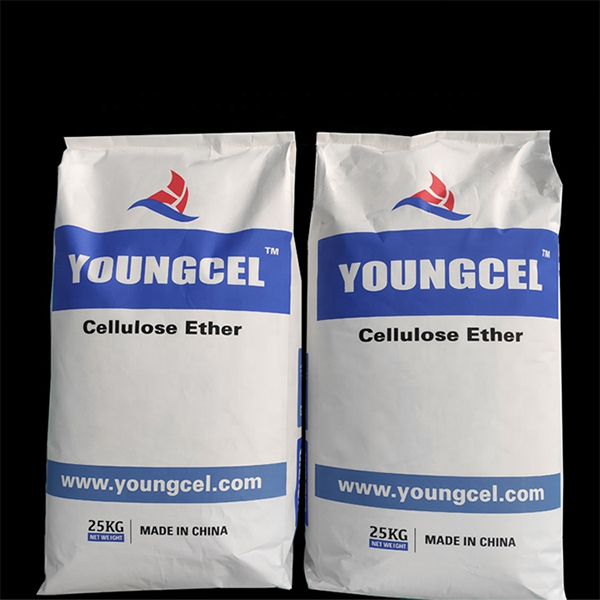
Application Case Studies
Real-world application demonstrates the transformative impact of Detergent Grade HPMC Hydroxypropyl Methylcellulose on product performance and market success. These case studies highlight its versatility and critical role in achieving superior detergent formulations.
Case Study 1: Enhanced Stability in Concentrated Liquid Laundry Detergent
A leading detergent manufacturer faced challenges with phase separation and sedimentation in their new line of ultra-concentrated liquid laundry detergents. Conventional thickeners failed to provide long-term stability in the highly ionic and surfactant-rich environment. By incorporating a high-viscosity Detergent Grade HPMC Hydroxypropyl Methylcellulose with optimized salt tolerance, the manufacturer achieved a stable, homogeneous formulation that maintained its integrity for over 12 months under accelerated aging tests. The HPMC prevented active ingredients and suspended particles from settling, ensuring consistent performance throughout the product's shelf life. This led to a 15% reduction in customer complaints related to product instability and significantly improved brand reputation.
Case Study 2: Improved Dissolution and Binding in Dishwasher Tablets
An innovator in automatic dishwashing products aimed to develop a multi-layer tablet that offered rapid dissolution while maintaining robust physical integrity during packaging and transport. Initial prototypes using standard binders showed poor tablet strength or incomplete dissolution, leading to residue. Collaboration with a specialized HPMC supplier led to the development of a custom HPMC grade with specific particle size distribution and a balanced degree of substitution. This HPMC acted as an effective binder, providing structural strength, and also as a controlled disintegrant, ensuring swift and complete dissolution in the dishwasher cycle. The resulting tablet exhibited a 20% improvement in mechanical strength and a 30% faster complete dissolution rate compared to previous formulations, capturing a larger share of the premium segment.
Case Study 3: Optimized Rheology for Industrial Degreaser
An industrial cleaning solutions provider required a highly viscous yet sprayable degreaser for vertical surfaces in manufacturing plants. The existing formulation sagged quickly, reducing contact time and efficacy. Through the inclusion of a medium-to-high viscosity Detergent Grade HPMC Hydroxypropyl Methylcellulose, the rheological profile of the degreaser was transformed. It exhibited shear-thinning properties, allowing for easy spraying, but quickly recovered viscosity on the surface, preventing run-off. This enhanced adherence improved contact time by over 50%, leading to significantly better cleaning performance, reduced product waste, and increased operational efficiency for industrial clients. The HPMC also demonstrated excellent compatibility with the strong alkaline and solvent components of the degreaser.
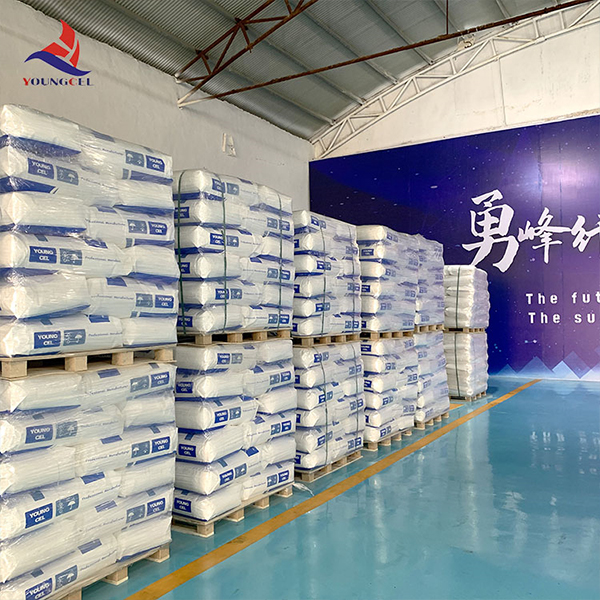
Frequently Asked Questions (FAQ)
- Q1: What makes HPMC "Detergent Grade" different from other HPMC grades?
- A1: Detergent Grade HPMC is specifically manufactured and optimized for use in detergent formulations. This typically involves precise control over viscosity, substitution ratios (methoxy and hydroxypropoxy content), and purity to ensure compatibility with various surfactants, excellent foam stabilization, effective rheology modification, and strong anti-redeposition properties suitable for cleaning applications. It also often features specific particle sizes for rapid or controlled dissolution.
- Q2: Is Detergent Grade HPMC environmentally friendly?
- A2: Yes, Detergent Grade HPMC Hydroxypropyl Methylcellulose is derived from natural cellulose, a renewable resource. It is generally regarded as biodegradable, non-toxic, and non-irritating, making it a preferred choice for formulators seeking to develop more sustainable and eco-friendly detergent products that meet stringent environmental regulations.
- Q3: How does HPMC improve the performance of liquid detergents?
- A3: In liquid detergents, HPMC primarily acts as a highly effective thickener and rheology modifier, providing desired viscosity for pourability, preventing phase separation, and suspending insoluble particles. It also contributes to foam stability and can enhance the anti-redeposition capabilities of the detergent by preventing loosened soil from re-depositing onto surfaces or fabrics.
- Q4: Can HPMC be used in both acidic and alkaline detergent formulations?
- A4: Yes, HPMC exhibits excellent stability across a wide pH range, typically from 3 to 11. This broad pH tolerance makes it suitable for use in a diverse array of detergent formulations, including both acidic toilet bowl cleaners and highly alkaline industrial degreasers, without significant loss of viscosity or performance.
- Q5: What are the typical lead times for bulk orders of Detergent Grade HPMC?
- A5: Standard lead times for bulk orders typically range from 2 to 4 weeks, depending on the specific grade, order volume, and current production schedules. For customized grades or exceptionally large orders, lead times may extend to 6 weeks. We maintain strategic stock levels of popular grades to accommodate urgent requirements and ensure consistent supply.

Lead Time, Warranty, and Customer Support
We are committed to providing exceptional service and support to our B2B partners, ensuring a seamless experience from inquiry to after-sales support for Detergent Grade HPMC Hydroxypropyl Methylcellulose.
Lead Time & Fulfillment:
Our robust manufacturing and supply chain capabilities enable us to offer competitive lead times. For standard grades of Detergent Grade HPMC, typical lead times for significant orders are 2-4 weeks. Expedited shipping options are available for urgent requirements. We utilize advanced logistics partners to ensure timely and secure delivery globally, complying with all international shipping regulations.
Quality Assurance & Warranty:
Every batch of our Detergent Grade HPMC Hydroxypropyl Methylcellulose is produced under strict ISO 9001 certified quality management systems and undergoes comprehensive testing to meet or exceed international standards and our own rigorous internal specifications. We provide a Certificate of Analysis (CoA) with every shipment. Our product comes with a standard 12-month warranty from the date of manufacture, guaranteeing it meets the agreed-upon specifications when stored under recommended conditions. Any deviations will be promptly addressed and resolved by our quality team.
Customer Support & Technical Assistance:
Our dedicated technical sales and support team is available to assist you at every stage. This includes:
- Pre-sales Consultation: Expert advice on selecting the optimal HPMC grade for your specific application.
- Formulation Support: Assistance with product integration, troubleshooting, and optimization of HPMC in your detergent formulations.
- Sample Requests: Provision of samples for R&D and pilot testing.
- After-sales Service: Responsive support for any technical queries, quality concerns, or logistics assistance.
Our goal is to foster long-term partnerships by providing not just a product, but a complete solution backed by industry-leading expertise and reliable service. Contact us via phone at [Insert Phone Number] or email at [Insert Email Address] for inquiries or support.

References
- Chemical and Physical Properties of Hydroxypropyl Methylcellulose. Journal of Polymer Science, Part B: Polymer Physics.
- The Role of Rheology Modifiers in Detergent Formulations. International Journal of Cosmetic Science.
- Cellulose Ethers: Properties and Applications. Polymer Degradation and Stability.
- Sustainability in Chemical Manufacturing: A Focus on Bio-based Polymers. Green Chemistry Journal.
- Advances in Detergent Technology for Concentrated Formulations. European Journal of Lipid Science and Technology.
Introduction to Detergent Grade HPMC Hydroxypropyl Methylcellulose
In the intricate landscape of modern chemical manufacturing, the role of high-performance additives cannot be overstated. Among these, Detergent Grade HPMC Hydroxypropyl Methylcellulose stands out as a critical component, revolutionizing the formulation of various detergent products. HPMC, a versatile cellulose ether, is widely recognized for its exceptional thickening, stabilizing, film-forming, and water retention properties. Specifically tailored for the detergent industry, its unique molecular structure provides optimal performance characteristics crucial for enhancing product efficacy, aesthetics, and user experience.
The demand for sophisticated detergent formulations that offer superior cleaning, long-lasting stability, and environmental compatibility has driven the evolution of additive technology. This advanced polymer addresses these demands by contributing to improved rheology, anti-redeposition capabilities, foam stabilization, and excellent dispersion in both liquid and powder systems. This article delves into the technical intricacies, application advantages, and market trends surrounding this essential polymer, offering a comprehensive overview for B2B decision-makers and technical specialists.

Industry Trends and Market Dynamics
The global detergent industry is undergoing significant transformation, influenced by factors such as increasing environmental consciousness, demand for concentrated products, and a shift towards sustainable formulations. Consumers and industrial clients alike are prioritizing detergents that are effective, biodegradable, and free from harsh chemicals. This trend directly impacts the choice of raw materials, elevating the importance of functional polymers like Detergent Grade HPMC Hydroxypropyl Methylcellulose.
- Sustainability Focus: Growing demand for bio-based and environmentally friendly ingredients. HPMC, derived from cellulose, aligns well with this trend due to its natural origin and biodegradability.
- Concentrated Formulations: The drive for reduced packaging, lower shipping costs, and improved efficiency has led to the development of highly concentrated detergents. HPMC's rheological control properties are crucial in maintaining the stability and pourability of these formulations.
- Performance Enhancement: Consumers expect superior cleaning performance, stain removal, and fabric care. HPMC contributes to these aspects by improving surfactant efficacy, suspending soil, and preventing redeposition.
- Specialty Detergents: Expansion into specialized segments such as laundry pods, dishwashing tablets, and industrial cleaners further broadens the application scope for tailor-made HPMC grades.
The market for cellulose ethers in detergents is projected to grow steadily, driven by these evolving requirements. Manufacturers are continuously innovating to produce HPMC variants with optimized solubility, viscosity profiles, and compatibility with various surfactant systems, thus solidifying its position as a key enabling ingredient.

Manufacturing Process of Detergent Grade HPMC
The production of Detergent Grade HPMC Hydroxypropyl Methylcellulose is a sophisticated chemical process involving several controlled steps to achieve the desired purity, degree of substitution, and molecular weight. Understanding this process is crucial for appreciating the product's quality and performance consistency.
Schematic Process Flow:
-
Raw Material Preparation:
High-purity refined cotton linter or wood pulp (cellulose) is meticulously selected. This cellulose serves as the backbone polymer. The material undergoes pre-treatment to ensure optimal reactivity.
-
Alkalization:
The cellulose is steeped in a concentrated alkaline solution, typically sodium hydroxide (NaOH), to activate the hydroxyl groups. This forms alkali cellulose, increasing its reactivity for subsequent etherification.
-
Etherification:
The alkali cellulose reacts with methyl chloride (CH3Cl) and propylene oxide (CH3CH(O)CH2) in a carefully controlled reactor. The methyl groups and hydroxypropyl groups substitute the hydroxyl groups on the cellulose backbone, forming the HPMC polymer. The ratio of these reactants and reaction conditions determine the degree of substitution and molar substitution, which are critical for the final product's properties, especially solubility and gelling temperature.
-
Neutralization and Purification:
After etherification, the reaction mixture is neutralized, usually with an acid. The crude HPMC is then purified through hot water washing to remove salts, unreacted reagents, and other by-products, ensuring high purity. This step is critical for detergent grade applications to prevent interference with other formulation components.
-
Drying, Grinding, and Sieving:
The purified HPMC is dried to a specified moisture content, then finely ground into a powder. Subsequent sieving classifies the product into various particle size distributions, optimizing it for different detergent forms (e.g., fine powder for tablets, coarser for liquid thickeners). This ensures consistent dissolution rates and performance.
-
Quality Control and Packaging:
Each batch undergoes rigorous quality control testing against international standards such as ISO and internal specifications (e.g., viscosity, moisture content, pH, purity, heavy metals). Products are then packaged in moisture-proof bags for optimal shelf life and transport.
The typical service life of properly stored cellulose ether is generally 1-2 years, maintaining its specifications under cool, dry conditions. Target industries for this product extend beyond general consumer detergents to include industrial & institutional (I&I) cleaners, textile detergents, dishwashing liquids, and specialty personal care cleansing products.
Advantages in typical application scenarios include enhanced viscosity stability in liquid detergents, improved anti-redeposition properties for laundry, and excellent film-forming capabilities in tablet formulations for efficient dissolution. The precise control over the manufacturing process ensures consistent product quality, which is paramount for sensitive detergent formulations.

Technical Specifications and Parameters
The efficacy of Detergent Grade HPMC Hydroxypropyl Methylcellulose in various applications is defined by its precise technical specifications. Key parameters include viscosity, degree of substitution (DS), molar substitution (MS), particle size, pH, and moisture content. These properties are meticulously controlled during manufacturing to ensure optimal performance in diverse detergent formulations.
Typical Product Specification Table for Detergent Grade HPMC:
| Parameter | Unit | Specification Range | Test Method |
|---|---|---|---|
| Viscosity (2% Solution, 20°C) | mPa.s | 50 - 200,000 (Customizable) | Brookfield RVT |
| Methoxy Content (DS) | % | 19.0 - 30.0 | USP/EP Method |
| Hydroxypropoxy Content (MS) | % | 3.0 - 12.0 | USP/EP Method |
| Moisture Content | % | ≤ 5.0 | ISO 1618-2 |
| Ash Content | % | ≤ 2.0 (untreated) / ≤ 0.5 (treated) | ISO 1618-1 |
| pH (1% Solution) | - | 5.0 - 8.0 | Potentiometric |
| Particle Size (through 80 mesh) | % | ≥ 98.0 | Standard Sieve |
Note: Specifications may vary slightly based on specific grade and application requirements. Customized solutions are available.

Application Scenarios and Technical Advantages
The diverse properties of Detergent Grade HPMC Hydroxypropyl Methylcellulose make it an indispensable additive across a wide spectrum of detergent applications, offering both functional and economic advantages.
Key Application Areas:
- Liquid Laundry Detergents: Acts as an excellent thickener and rheology modifier, providing desired viscosity for pourability and stability. It prevents phase separation of multi-component formulations and enhances the suspension of pigments and insoluble solids. This HPMC grade also contributes to anti-redeposition, ensuring soil is suspended in the wash water and doesn't re-deposit onto fabrics.
- Dishwashing Liquids: Improves foam stability and creates a rich, long-lasting lather, which is perceived as a sign of efficacy by consumers. Its thickening capability enhances the "feel" and dispensing of the product.
- Detergent Powders & Tablets: In powder formulations, this cellulose ether acts as a binder and disintegrant, improving granule integrity and aiding quick dissolution upon contact with water. For detergent tablets and pods, it functions as a film-former, providing structural integrity and controlled release of active ingredients. This helps in achieving precise dosing and enhanced cleaning performance.
- Industrial & Institutional (I&I) Cleaners: Used in heavy-duty cleaners, floor cleaners, and degreasers where stable viscosity and enhanced soil suspension are critical for efficient cleaning in large-scale applications. Its high salt tolerance is particularly beneficial in these demanding environments.
- Personal Care Cleansing Products: While primarily detergent grade, certain HPMC types cross over into body washes, shampoos, and hand soaps, providing thickening, foam enhancement, and sensory benefits.
Technical Advantages:
- Superior Thickening Efficiency: Provides stable viscosity over a wide pH range and temperature, ensuring product consistency and desired rheology. This is critical for achieving optimal dispensing and user experience.
- Excellent Foam Stabilization: Enhances the stability and volume of foam, which is a key performance indicator for many cleansing products.
- Anti-Redeposition Properties: Forms a protective film on fabric surfaces or suspended soil particles, preventing dirt from re-depositing during the wash cycle, leading to cleaner results.
- Improved Emulsification & Dispersion: Aids in dispersing insoluble components and stabilizing emulsions, leading to homogeneous and stable detergent formulations.
- Film-Forming & Binding Capabilities: Crucial for the structural integrity of detergent tablets and pods, ensuring controlled dissolution and efficient delivery of active ingredients.
- Temperature and Salt Tolerance: Maintains performance characteristics even in challenging conditions, including varying water hardness and temperature ranges.
- Biodegradability & Eco-friendliness: Derived from natural cellulose, HPMC is a more sustainable choice, aligning with contemporary environmental regulations and consumer preferences.

Vendor Comparison and Customized Solutions
Selecting the right supplier for Detergent Grade HPMC Hydroxypropyl Methylcellulose is a critical decision for manufacturers, impacting product quality, cost-effectiveness, and supply chain reliability. While many vendors offer HPMC, distinguishing factors lie in their technical expertise, quality control, customization capabilities, and after-sales support.
Key Considerations for Vendor Selection:
- Quality & Consistency: Adherence to international quality standards (e.g., ISO 9001, REACH compliance), rigorous batch testing, and low batch-to-batch variation are paramount for consistent detergent formulations.
- Technical Support: A vendor offering deep technical expertise can provide invaluable assistance in formulation development, troubleshooting, and optimizing HPMC integration.
- Customization Capabilities: The ability to tailor HPMC properties (viscosity, substitution levels, particle size) to specific application needs is a significant advantage, enabling unique product development and performance enhancement.
- Supply Chain Reliability: Robust manufacturing capacity, efficient logistics, and reliable lead times ensure uninterrupted production for clients.
- Cost-Effectiveness: Balancing competitive pricing with uncompromising quality and service.
- Certifications: Verifiable industry certifications and product registrations attest to product safety and regulatory compliance.
Customized Solutions:
Recognizing that no two detergent formulations are identical, leading suppliers offer bespoke HPMC solutions. This involves adjusting the key parameters to precisely match client requirements:
- Viscosity Tuning: Offering a wide range of viscosity grades (from low to very high) to achieve specific rheological profiles for thin liquids, gels, or thick pastes.
- Substitution Ratio Optimization: Adjusting methoxy and hydroxypropoxy content to fine-tune solubility in different temperature ranges, gelling properties, and surface activity.
- Particle Size Engineering: Providing different particle sizes for rapid dissolution in liquid systems or controlled release in powder/tablet formulations. Treated grades with delayed hydration can also be engineered.
- Surface Treatment: Modifying HPMC surface to enhance dispersion in cold water or improve compatibility with specific surfactant systems.
- Purity Levels: Offering grades with ultra-low ash or heavy metal content for highly sensitive applications or specific regulatory markets.
Such customization ensures that manufacturers can achieve optimal performance, reduce formulation complexity, and improve cost-efficiency, ultimately leading to superior end-products. Companies with dedicated R&D facilities and experienced technical teams are best positioned to deliver these tailored solutions.

Application Case Studies
Real-world application demonstrates the transformative impact of this versatile polymer on product performance and market success. These case studies highlight its critical role in achieving superior detergent formulations.
Case Study 1: Enhanced Stability in Concentrated Liquid Laundry Detergent
A leading detergent manufacturer faced challenges with phase separation and sedimentation in their new line of ultra-concentrated liquid laundry detergents. Conventional thickeners failed to provide long-term stability in the highly ionic and surfactant-rich environment. By incorporating a high-viscosity Detergent Grade HPMC Hydroxypropyl Methylcellulose with optimized salt tolerance, the manufacturer achieved a stable, homogeneous formulation that maintained its integrity for over 12 months under accelerated aging tests. The HPMC prevented active ingredients and suspended particles from settling, ensuring consistent performance throughout the product's shelf life. This led to a 15% reduction in customer complaints related to product instability and significantly improved brand reputation.
Case Study 2: Improved Dissolution and Binding in Dishwasher Tablets
An innovator in automatic dishwashing products aimed to develop a multi-layer tablet that offered rapid dissolution while maintaining robust physical integrity during packaging and transport. Initial prototypes using standard binders showed poor tablet strength or incomplete dissolution, leading to residue. Collaboration with a specialized HPMC supplier led to the development of a custom HPMC grade with specific particle size distribution and a balanced degree of substitution. This HPMC acted as an effective binder, providing structural strength, and also as a controlled disintegrant, ensuring swift and complete dissolution in the dishwasher cycle. The resulting tablet exhibited a 20% improvement in mechanical strength and a 30% faster complete dissolution rate compared to previous formulations, capturing a larger share of the premium segment.
Case Study 3: Optimized Rheology for Industrial Degreaser
An industrial cleaning solutions provider required a highly viscous yet sprayable degreaser for vertical surfaces in manufacturing plants. The existing formulation sagged quickly, reducing contact time and efficacy. Through the inclusion of a medium-to-high viscosity HPMC, the rheological profile of the degreaser was transformed. It exhibited shear-thinning properties, allowing for easy spraying, but quickly recovered viscosity on the surface, preventing run-off. This enhanced adherence improved contact time by over 50%, leading to significantly better cleaning performance, reduced product waste, and increased operational efficiency for industrial clients. The HPMC also demonstrated excellent compatibility with the strong alkaline and solvent components of the degreaser.

Frequently Asked Questions (FAQ)
- Q1: What makes HPMC "Detergent Grade" different from other HPMC grades?
- A1: Detergent Grade HPMC is specifically manufactured and optimized for use in detergent formulations. This typically involves precise control over viscosity, substitution ratios (methoxy and hydroxypropoxy content), and purity to ensure compatibility with various surfactants, excellent foam stabilization, effective rheology modification, and strong anti-redeposition properties suitable for cleaning applications. It also often features specific particle sizes for rapid or controlled dissolution.
- Q2: Is this HPMC grade environmentally friendly?
- A2: Yes, Detergent Grade HPMC Hydroxypropyl Methylcellulose is derived from natural cellulose, a renewable resource. It is generally regarded as biodegradable, non-toxic, and non-irritating, making it a preferred choice for formulators seeking to develop more sustainable and eco-friendly detergent products that meet stringent environmental regulations.
- Q3: How does HPMC improve the performance of liquid detergents?
- A3: In liquid detergents, HPMC primarily acts as a highly effective thickener and rheology modifier, providing desired viscosity for pourability, preventing phase separation, and suspending insoluble particles. It also contributes to foam stability and can enhance the anti-redeposition capabilities of the detergent by preventing loosened soil from re-depositing onto surfaces or fabrics.
- Q4: Can HPMC be used in both acidic and alkaline detergent formulations?
- A4: Yes, HPMC exhibits excellent stability across a wide pH range, typically from 3 to 11. This broad pH tolerance makes it suitable for use in a diverse array of detergent formulations, including both acidic toilet bowl cleaners and highly alkaline industrial degreasers, without significant loss of viscosity or performance.
- Q5: What are the typical lead times for bulk orders of this product?
- A5: Standard lead times for bulk orders typically range from 2 to 4 weeks, depending on the specific grade, order volume, and current production schedules. For customized grades or exceptionally large orders, lead times may extend to 6 weeks. We maintain strategic stock levels of popular grades to accommodate urgent requirements and ensure consistent supply.

Lead Time, Warranty, and Customer Support
We are committed to providing exceptional service and support to our B2B partners, ensuring a seamless experience from inquiry to after-sales support for our high-quality cellulose ether products.
Lead Time & Fulfillment:
Our robust manufacturing and supply chain capabilities enable us to offer competitive lead times. For standard grades, typical lead times for significant orders are 2-4 weeks. Expedited shipping options are available for urgent requirements. We utilize advanced logistics partners to ensure timely and secure delivery globally, complying with all international shipping regulations.
Quality Assurance & Warranty:
Every batch of our HPMC is produced under strict ISO 9001 certified quality management systems and undergoes comprehensive testing to meet or exceed international standards and our own rigorous internal specifications. We provide a Certificate of Analysis (CoA) with every shipment. Our product comes with a standard 12-month warranty from the date of manufacture, guaranteeing it meets the agreed-upon specifications when stored under recommended conditions. Any deviations will be promptly addressed and resolved by our quality team.
Customer Support & Technical Assistance:
Our dedicated technical sales and support team is available to assist you at every stage. This includes:
- Pre-sales Consultation: Expert advice on selecting the optimal HPMC grade for your specific application.
- Formulation Support: Assistance with product integration, troubleshooting, and optimization of HPMC in your detergent formulations.
- Sample Requests: Provision of samples for R&D and pilot testing.
- After-sales Service: Responsive support for any technical queries, quality concerns, or logistics assistance.
Our goal is to foster long-term partnerships by providing not just a product, but a complete solution backed by industry-leading expertise and reliable service. Contact us via phone at [Insert Phone Number] or email at [Insert Email Address] for inquiries or support.

References
- Chemical and Physical Properties of Hydroxypropyl Methylcellulose. Journal of Polymer Science, Part B: Polymer Physics.
- The Role of Rheology Modifiers in Detergent Formulations. International Journal of Cosmetic Science.
- Cellulose Ethers: Properties and Applications. Polymer Degradation and Stability.
- Sustainability in Chemical Manufacturing: A Focus on Bio-based Polymers. Green Chemistry Journal.
- Advances in Detergent Technology for Concentrated Formulations. European Journal of Lipid Science and Technology.
-
Understanding Methyl 2 Hydroxyethyl Cellulose: Uses, Benefits & Industry InsightsNewsNov.24,2025
-
Hydroxyethyl Methyl Cellulose HEMC: Industrial Uses, Benefits & Future TrendsNewsNov.23,2025
-
HEMC Cellulose: Versatile & Sustainable Industrial Polymer | YoungcelNewsNov.23,2025
-
Methyl Hydroxyethyl Cellulose: Versatile Building Block for Industry & SustainabilityNewsNov.23,2025
-
CAS 9032 42 2: Understanding Polyvinyl Alcohol's Impact on Industry & SustainabilityNewsNov.22,2025
-
Hydroxyethyl Methyl Cellulose: Versatile Solutions for Modern Industry and SustainabilityNewsNov.22,2025




